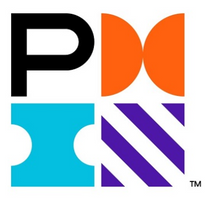After discussing the definition of projects in the first post of The Project Management ABC: A Series on Fundamental Concepts, it’s time to discuss some key factors impacting project delivery.
The environment in which projects operate impacts and influence the project’s definition and trajectory. Internal organisational factors such as its data assets, infrastructure, and organisational culture, structure, and governance, all have an impact on how projects are defined, executed, monitored, and controlled.
Organisations don’t operate in silos; external environments such as market conditions, regulatory constraints, and industry standards also have an impact on projects.
How do these internal and external factors impact projects?
Projects are subject to diverse impacts from both internal and external factors. Let’s explore five specific ways in which these factors exert their influence on projects.
Scope
The project scope, which is one of the most fundamental aspects of projects, is highly impacted by these factors.
According to PMI, the project scope is:

“The work that needs to be accomplished to deliver a product, service, or result with the specified features and functions.”
PRINCE2 defines project scope as:
In summary, the project scope is the work that must be completed to achieve the project’s targeted outcomes. External factors to the organisation, such as customer and industry trends, have an impact on the work that must be delivered in the project. For example, if the project involves the development of a new product, its features must meet the expectations of the customer.
The organisation’s strategic goals also shape the boundaries of the project. If I were to use the previous example of introducing a new product to the market, it might appear that investing in a specific feature is the natural course of action given the high customer demands. However, in certain instances, these customer demands may not be aligned with the organisation’s strategic goals and as a result, the organisation might pass up this opportunity in favour of others that are.
Time
The organisational environment often influences the duration of the project. If, for example, the organisation is operating in a regulatory environment, they are often obliged to meet specific regulations by a particular date. In this case, the regulatory date constrains the project end date.
The organisation’s project pipeline, internal processes, systems, and resource availability to mention a few, highly influence the project timeline. If, for example, certain people with specific skill sets are assigned to a critical project and the same people are needed for another, less critical project, the duration of the latter will be impacted.
Cost
The project cost includes all the expenses associated with the delivery of the project, including materials, equipment, and human resources. Market conditions, economic environment, and political and legal factors all influence the cost of the material and, therefore, the investment required to deliver a project.
In many cases, there is lack of awareness regarding the influence of internal factors on the overall cost of projects. Legacy systems, bureaucratic processes, and organisational structures all impact the project’s total cost. While organisations may have little control over external factors, they can address the challenges posed by internal factors through business process reengineering and transformational programmes.
Quality
PMP defines project quality as “the degree to which a project satisfies the requirements and meets the expectations of stakeholders.” Naturally, the external environment such as customer requirements and expectations, has a significant impact on the minimum quality parameters the project should meet. The same is true for industry regulations and standards. These shape the quality of the product as they define the minimum set of standards and ‘rules’ that the project should meet to be compliant with specific regulations.
Organisational culture can also influence project quality. A culture that emphasises excellence invests in robust processes and systems that ensure high-quality project deliverables through, for example, standardisation, automation, and best quality control measurement techniques. Project team competencies in certain areas also play a crucial role in project quality, and therefore, organisations must continuously invest in upskilling and reskilling their workforce.
Resources
Similarly to project cost, the economic climate and market conditions can have an impact on the organisation’s ability to acquire specific resources. Furthermore, changes in customer demands and industry regulations may force organisations to change the type of material used in their products. This could lead to organisations changing their equipment, processes, and possibly looking for new suppliers. Such change may also necessitate organisations investing in new talent or upskilling/reskilling their existing workforce.
The way organisations manage their human resources influences employee turnover. Micromanaging, lack of trust, and poor work-life balance are some causes of employee turnover, all of which have an impact on the overall organisational human resource supply that can be assigned to projects.
Balancing these factors
These five factors are strongly interconnected aspects of project management that influence each other in various ways. Balancing and managing these factors throughout the project lifecycle ensures that projects are completed within the desired scope, budget, and timeline while meeting quality expectations.
In many cases, some trade-off is necessary. This may include accepting a project at a higher cost than initially projected to delivery on time. Other trade-off may be accepting a delay to keep the project within its original cost (maybe due to lack of resource availability).
These trade-offs can be managed effectively in several ways, which I will explain in future posts. So, stay tuned!
As the objective of this post is to offer newcomers in the field of project management a foundational understanding, I have intentionally simplified certain aspects of the content. If you seek more comprehensive and precise information, please don’t hesitate to reach out.
I’m Jonathan Spiteri, and I bring a wealth of experience in innovation, strategy, agile methodologies, and project portfolio management. Throughout my career, I’ve had the privilege of working with diverse teams and organisations, helping them navigate the ever-evolving landscape of business and technology. I’ve also earned multiple prestigious certifications, such as Axelos Portfolio Director, SAFe® 6 Practice Consultant, Organisation Transformation, Project Management Professional (PMP), TOGAF 9.2, and Six Sigma Black Belt. These qualifications reflect my dedication to achieving excellence and my proficiency across various domains.



